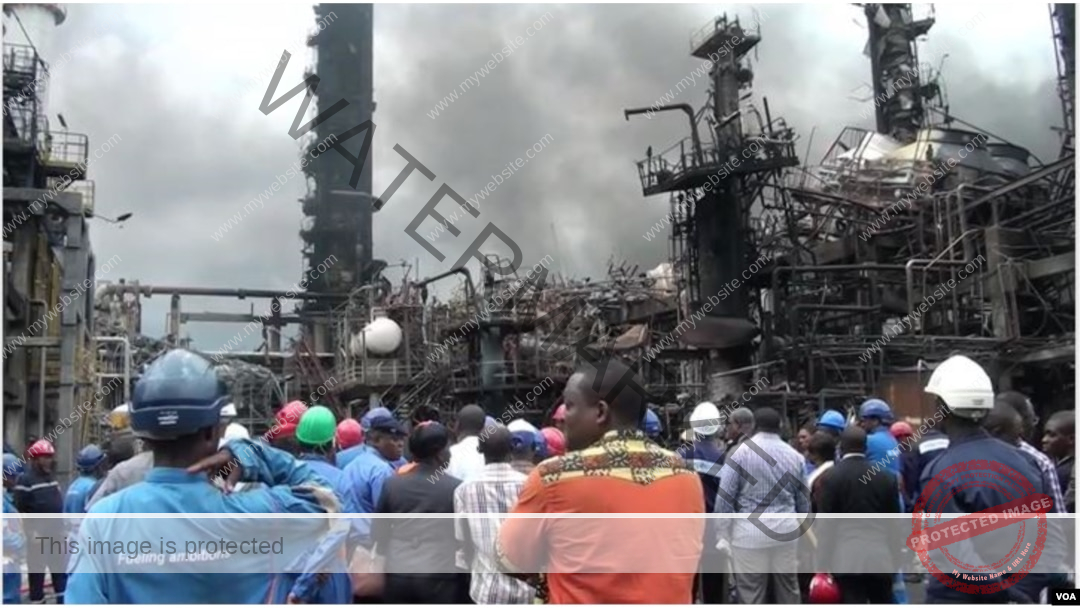The ashes of SONARA abandoned for a new refinery in Kribi
By Dr. Louis Egbe Mbua, Ph.D., Professor of Aeronautical Engineering
& Dr. Martin Mungwa, Ph.D., F.ASCE, Utility Engineering Expert.
Whether or not La République du Cameroun (LRC) rebuilds the SONARA refinery, the deeper truth is inescapable: SONARA was never created to serve the people of Victoria or the broader Southern Cameroons. It was not an emblem of development but a mechanism of extraction. Its legacy is not one of prosperity but of exploitation—and contamination.
Now, LRC has announced that a new refinery will be constructed in Kribi—far removed from Southern Cameroons. This is not a matter of economic optimization; it is a strategic withdrawal, signaling the end of an era and the beginning of a new phase in the Southern Cameroons liberation movement: strategic realignment.
Historical Context: A Federal Promise Betrayed
In 1961, Southern Cameroons entered a federal union with LRC under the supervision of the United Nations, based on UN Resolution 1608 (XV). This resolution required a formal tripartite agreement between the United Kingdom, Southern Cameroons, and LRC before any unification could take place.
That agreement was never signed. Yet LRC proceeded to dismantle the federal structure by:
Abolishing the West Cameroon Parliament
Dissolving the separate judiciary rooted in Common Law
Centralizing the police and treasury
Replacing federalism with authoritarian centralism
In this context, SONARA—built in the 1970s in Limbe (Victoria)—was never about regional development. It was about extracting wealth without accountability.
Economic Apartheid in the Name of National Unity
Despite being situated in Victoria, SONARA’s operations were controlled and taxed from Yaoundé and Douala. Southern Cameroonians had no equity, no decision-making role, and no share in the profits. The port was never expanded. The local economy remained disconnected from the refinery’s presence.
Tiko and Victoria, once thriving urban centers in the 1950s and 60s, have stagnated. The result is clear: economic apartheid dressed in the language of national unity.
Environmental and Public Health Impact: A Hidden Crisis
Beyond economic injustice, SONARA’s presence created a public health and environmental catastrophe that has gone largely unreported—but whose consequences are deeply felt today.
- Asbestos Contamination
SONARA was built during a period when asbestos, a known carcinogen, was commonly used in industrial insulation. Despite international bans in the late 1970s, no documented effort was made to remove these materials from the site.
Airborne asbestos fibers can cause:
Mesothelioma
Lung cancer
Asbestosis
- Petrochemical Waste and Toxic Emissions
Refinery operations released:
Benzene and Toluene — carcinogens linked to leukemia
Polycyclic Aromatic Hydrocarbons (PAHs) — linked to skin, bladder, and liver cancers
Heavy metals — including cadmium, mercury, and lead, which contaminate soil and groundwater
- Coastal Ecosystem Degradation
SONARA’s waste streams degraded marine biodiversity and undermined the livelihoods of local fishing communities. Local seafood has likely been contaminated with bioaccumulative toxins. - Unexplained Rise in Cancer Rates
While national health authorities have suppressed epidemiological studies, local medical observations point to an alarming rise in cancer, birth defects, and respiratory diseases in the vicinity of the refinery.
Estimated Cost of Remediation: A Legal Obligation of LRC
Based on international industry benchmarks (EPA, UNEP, ILO) for industrial cleanup, medical restitution, and environmental rehabilitation, the estimated cost of remediation for SONARA’s legacy in Victoria is as follows:
Remediation Category Estimated Cost (USD)
Asbestos abatement and safe disposal $80–100 million
Soil and groundwater decontamination (Phase I–III) $120–150 million
Marine ecosystem restoration (coastal/fisheries) $70–90 million
Public health interventions and cancer registry $30–50 million
Community medical compensation fund (20-year scope) $100–120 million
Environmental monitoring infrastructure (10 yrs) $25–35 million
Total Estimated Liability to LRC $425–545 million USD
These figures represent conservative estimates based on similar refinery cleanups in Sub-Saharan Africa, Latin America, and South Asia. Given the absence of corporate accountability mechanisms, sovereign environmental law, and local compensation, the liability for this remediation must fall squarely on the government of La République du Cameroun—which owned, operated, and regulated SONARA.
Kribi: Retreat or Strategy?
LRC’s move to Kribi reflects more than infrastructure planning. It is a geopolitical signal: the consolidation of economic assets within territories fully controlled by Yaoundé. But this retreat does not absolve LRC of its environmental, economic, or legal obligations in Southern Cameroons.
If LRC intends to continue extracting oil from Southern Cameroons territory—without reparations, environmental audits, or stakeholder consent—it will face mounting legal and civic resistance.
International Legal Standing and the Path to Restitution
The African Commission on Human and Peoples’ Rights (ACHPR), in its 2009 ruling on Gunme v. LRC, affirmed that the people of Southern Cameroons constitute a “distinct people” entitled to self-determination and autonomous development. Though the ACHPR stopped short of recommending independence, it confirmed that the federal dismantlement was unjust and the current situation untenable.
More recently, former South African President Thabo Mbeki revealed that President Biya rejected peaceful mediation and instead co-opted African Union envoys through luxury diplomacy—a clear act of bad faith.
Meanwhile, UN Resolution 1608 remains legally unfulfilled. No formal agreement was ever ratified binding Southern Cameroons to LRC. Therefore, any post-1972 exploitation of resources from Southern Cameroons is arguably illegal under international law.
Conclusion: From Extraction to Accountability
The fall of SONARA is symbolic. It represents:
The collapse of the illusion of national unity
The end of economic extraction without resistance
The beginning of strategic economic and legal realignment
Justice for Southern Cameroons is not just a political demand—it is a legal, environmental, and moral imperative.
LRC may have paved the road to Kribi, but the road to restitution, accountability, and sovereign dignity begins in Victoria. The people of Southern Cameroons are no longer spectators. They are witnesses, plaintiffs, and protagonists in the unfolding story of their national rebirth.

